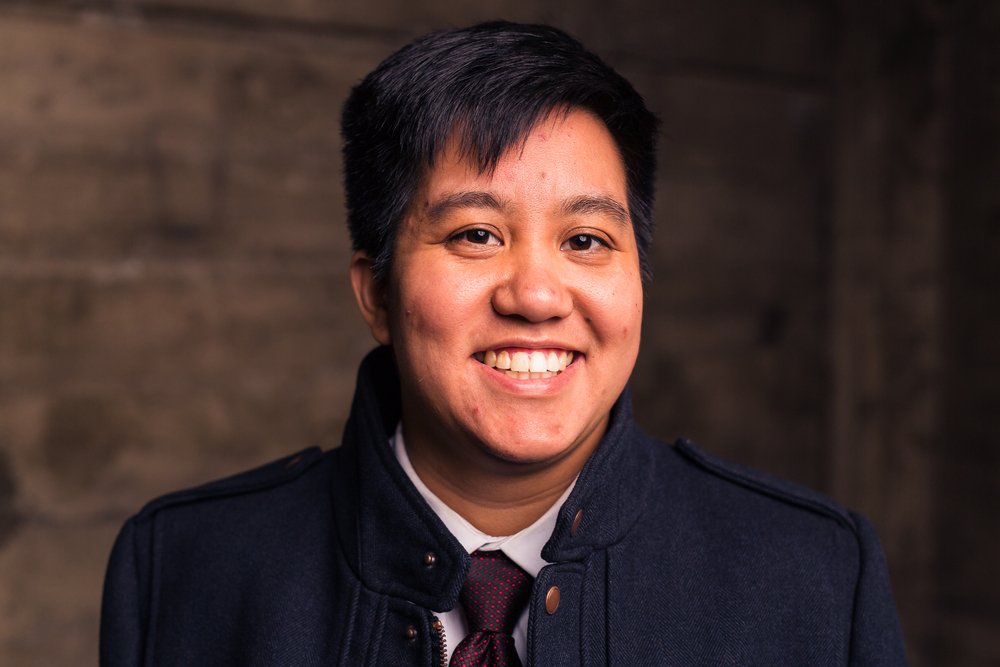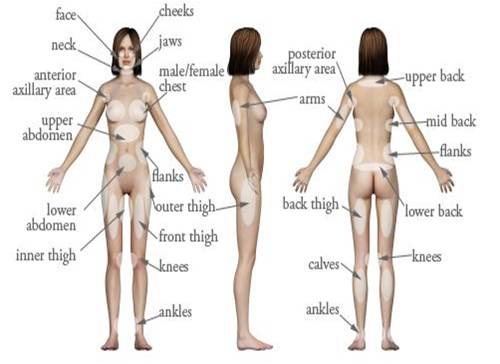
Dr. Navin Singh understands the needs and desires for reconstructive and transformational surgeries. With utmost care and concern for detail and outcome, Dr. Singh customizes the procedures for natural and transformational results.
The first step to any procedure is a customized consultation. This consultation allows you the opportunity to speak with the doctor on the best options available to match the long-term goals of a Female to Male.
Facial Restructuring
While transitioning, a patient may consider procedures that would fit their final body image ideals. Transitioning is unique to the individual just like puberty. The final results are a process and take knowledge of how a procedure will change the appearance and aesthetic before, during and after a procedure.
The first step will always be a consultation to consider and weigh the best options with your goals in mind. Dr. Singh is highly trained in the transitioning process and believes in a seamless process of health, empowerment and ownership.
Some procedures to consider include:
Rhinoplasty – Having a prominent nose affects the overall aesthetic and is a facial gender cognitive recognition point. Having the right gender based nose will bring balance to the facial impression of gender.
Brow Ridge Filler – Adding fillers to the forehead will produce a masculine brow ridge line (ex. George Clooney) and give a depth to the face resulting in a more visible masculine eye palette. To avoid the Zach Effron brow, a filler procedure can help build a more robust brow and avoid the effeminate perception.
Adam’s Apple Creation– Includes an implant that reflects visually like the normal formation of an Adam’s Apple. The surgery is transformative in the detail of distance and visual facial recognition of gender.
Chin Implants – While a feminine chin is pointy (Ex. Justin Beiber), a transitioning chin is angular. Having a prominent jawline is an important step in the transitioning and could greatly enhance the visibility of a masculine aesthetic.
Other options may be considered with an in-person consultation. Exploring options is the best way to evaluate if you are a good candidate for any procedure.
Top Surgery
Top surgery is also known as a subcutaneous mastectomy. The goal of this surgery is to create a more masculine- looking chest by removing or minimizing the breasts. The results should have an aesthetically pleasing male contour and minimal scarring.
This process can be achieved using a combination of excision (surgical removal) and/or liposuction. There are a few techniques that are used. The techniques listed below are chosen based on each individual’s case.
For example, a patient with a small amount of breast tissue is likely to go with the just liposuction technique, whereas a patient with larger breasts will go with the double incision technique.
Surgical Techniques:
“Top surgery” is typically one of the first procedures that FTM patients undergo. This involves the removal of breast tissue to create a male chest. There are two main surgical techniques that can be used to reconstruct the chest. Which technique is used depends on the amount of skin and breast tissue present.
For those with a lot of excess skin and breast tissue, the most common procedure is the bilateral simple mastectomy with nipple grafts, commonly known as the double incision (DI) surgery.
This procedure does leave a scar on each side of the chest, but the scars are generally placed along the lower border of the pectoral muscle fold to help hide the scarring. While the scars are permanent, they should fade significantly with time. The area around the nipple (the areola) is reduced to an appropriate male size and is repositioned to an appropriate male location.
For those with minimal excess skin and breast tissue, another technique called a Subcutaneous Mastectomy is preferred as it removes breast tissue leaving only a small “key hole” incision. The clear advantage is that there is much less scarring.
Come visit us today for a consultation. We will provide you with a customized treatment plan that makes it as safe and easy as possible for you to have the look and results you desire.
Nipple Grafting on Double Incision Top Surgery
Top surgery with Laser Liposuction
Body Contouring with SmartLipo
All bodies, whether male or female, come in different shapes and sizes. Genetic females store fat a lot easier than men. Women’s bodies store fat in different areas such as the hips, buttocks and thighs – but not usually around the waist.
As a result, their bodies appear curvier and more voluptuous – which is something many transgender women worry about during their physical transformation.
Though it’s possible to achieve a feminine form through a variety of surgical and lifestyle choices, it’s important to recognize the natural differences in body types between men and women, and to form realistic expectations based on your natural physical form.
No two women’s bodies are the same. The female form comes in many different physical packages, all which are beautiful in their own way.
Liposuction, also known as lipoplasty or liposculpture, is a body-sculpting procedure to remove fat deposits that are unresponsive to dieting and exercising. This procedure can be applied to many different areas of the body. Liposuction results in a slimmer and better proportioned figure.
In the abdomen, liposuction can be used alone to decrease flank fullness (“love-handles”), and decrease the thickness of the abdominal wall. Sometimes, it is used in conjunction with an abdominoplasty, or tummy tuck, to provide the patient with the best possible results.
This mainly depends on the amount of excess skin and the quality of the skin in the abdomen, which will be evaluated during your initial consultation. This procedure can also be done in conjunction with other procedures such as the tummy tuck, fat grafting, breast augmentations in order to help contour the body to fit the desires of the patient.
Reasons for Considering Liposuction
-Create a more proportioned figure
-Contour the body
-Eliminate fat from any of the following areas:
-Chin and Neckline
-Back
-Upper Arms
-Stomach and Waistline
-Hips and Buttocks
-Thighs and Knees
–Calves and Ankles
Liposuction versus Diet and Exercise
Liposuction is not a replacement for proper exercise and diet. Patients that have excess weight will do better by starting with a professional diet regimen such as Weight Watchers® and with a regular exercise regimen.
Once natural weight loss is achieved, which takes a number of months, liposuction can be used to address stubborn areas to complete the transformation.
How Many Areas Can I Have Done?
Several areas can be liposuctioned on the same day. For your safety, we generally limit liposuction to approximately five liters of “aspirate”.
For some people, only one or two areas can be done before reaching this level, for others, four or five areas can be done. This all depends on the amount of preexisting fat in the region.
Who Is A Good Candidate For Liposuction?
Liposuction is a popular procedure for persons looking to improve their body contour by reshaping areas of excess fat. The best candidates are people looking to remove fat deposits resistant to diet and exercise.
Anesthesia
Liposuction is generally done under general anesthesia or under intravenous sedation. When administered by a certified anesthesia provider, these techniques are very safe and provide patients with a comfortable experience.
Smaller areas can be performed under local anesthesia only where the area is numbed and the patient remains awake.
Make sure, however, that the provider offering to perform liposuction under local anesthesia in the office still has privileges to perform the procedure in a surgical facility under general or intravenous sedation. This will assure that he or she is recognized as qualified to perform the procedure by his or her peers.
General Procedure
Through tiny incisions in the skin, an infiltrating canula is inserted and “tumescent” fluid is infiltrated. This fluid consists of a mixture composed of lactated ringer’s solution mixed with a local anesthetic (lidocaine), mixed with a constrictor of the blood vessels to decrease bleeding (epinephrine).
The solution is massaged and given time to work. The amount of solution can differ between techniques ranging from a “super wet” technique where approximately the amount infiltrated is the same as the planned aspiration, to a “tumescent” technique where even more fluid is inserted.
The technique used will depend somewhat on the amount of total aspiration planned and your body habitus. After the infiltrate is given time to work, a narrow tube or “canula” is inserted and used to vacuum out the fatty tissue beneath the skin.
Different sizes of canulas with different lengths and apertures will be used according to each patient’s fat location. The surgeon determines the amount of fat to be removed by massaging the skin and squeezing the tissue. After eliminating the excess fat, the incisions are closed.
Compression
A compression dressing or bandage is applied to the area and will need to be worn for an extended period of time (approximately six weeks). This will prevent bleeding, reduce swelling, and support the affected area. There are a variety of specialty garments manufacturers that provide specialized wear for liposuction patients.
Variations on Techniques
There are several different types of “newer” liposuction procedures, such as ultrasonic and power assisted liposuction, that has developed as a result of recent advancements in new technologies. These are especially useful in targeting areas where the fat is more fibrous, such as in the back or breast.
Together, the patient and the surgeon can discuss which method(s) are best during the initial consultation visit. Liposuction can last from thirty minutes to several hours depending upon the amount of fat to be removed. Liposuction surgery is an excellent procedure that can benefit those who want to remove unattractive fatty deposits. Lasers may be used to enhance the lipolysis and skin tightening associated with liposuction
Recovery Process
The length of the recovery will depend on how extensive of an operation the patient undergoes. A support garment may need to be worn for several weeks after the surgery, depending upon which area(s) are selected to utilize the liposuction procedure. Patients sometimes report minor pain associated with surgery which can be treated effectively with oral medication.
Bottom Surgery
Bottom surgery, also known as genital surgery, is available to patients who wish to augment their lower body to create alignment with their gender identity. The procedures for this surgery can include a metoidioplasty or a phalloplasty.
METOIDIOPLASTY
Metoidioplasty is the creation of a phallus (penis) from the hormonally-enlarged clitoris. Generally, it involves releasing a hormonally enlarged clitoris, urethroplasty (lengthening the urethra to the tip of the phallus), covering the phallus with neighboring skin, and/or scrotoplasty. This procedure improves the resemblance to a cisgender male’s phallus.
Metoidioplasty is a good option for those with good clitoral growth from use of testosterone. It’s a less invasive and more affordable surgery than phalloplasty.
Options for Metoidioplasty
- With urethral lengthening (ability to urinate while standing up)
- No urethral lengthening
- Scrotal creation with testicular implants (scrotoplasty)
Benefits of Metoidioplasty
- Single-stage surgery
- Sensitivity of clitoris is maintained
- Natural erectile function (no need for penile prosthesis)
- Lower complication rates and shorter healing time than phalloplasty
Before the surgery, Dr. Navin Singh takes into consideration the size of the clitoral body, hood, urethral plate, and neighboring tissue to maximize the aesthetic result in order to achieve the metoidioplasty that best suits the patient’s anatomy. Patients undergoing this procedure must be on testosterone for at least 1 whole year. This procedure can take anywhere from 2 – 4 hours, depending on which option you decide to proceed with.
Recovery after a metoidioplasty is usually 1-2 weeks before returning to a desk job and 4-6 weeks before returning to the gym. During the initial recovery period, a catheter will be placed in your urethra to drain urine from the body while it heals. It is important for patients to speak with their surgeon beforehand for a detailed description of the procedure.
BOTTOM SURGERY IN A NUTSHELL
Just like top surgery, the bottom surgery also has its benefits, such as:
- Life-changing gender confirmation
- Ability to urinate standing up
- Ability to have enjoyable intercourse
- Improved confidence
- Natural-looking, and natural-feeling, aesthetic results
As all patients who undergo genital surgery have their own goals and desires for the outcome of their transition, Dr. Singh works closely with clients and his team to guarantee a personalized procedure plan that will give you the most seamless and satisfying results.
How Ultherapy Is Revolutionizing Non-Surgical Facelifts
Discover the Non-Surgical Way to Lift and Tighten Your Skin: Ultherapy Aging is inevitable, but looking your age is optional. While we can’t turn back [...]
Unlocking the Secrets to a More Sculpted Face: What Causes Facial Fat & How to Reduce It
Your face is the first thing people notice about you—it shapes your overall appearance and can influence how youthful and defined you look. But for [...]
Everything You Need to Know About Enhancing Your Lips and the Area Around Them
Your lips and the skin around your mouth play a starring role in how you look and express yourself. They frame your smile, highlight your [...]


